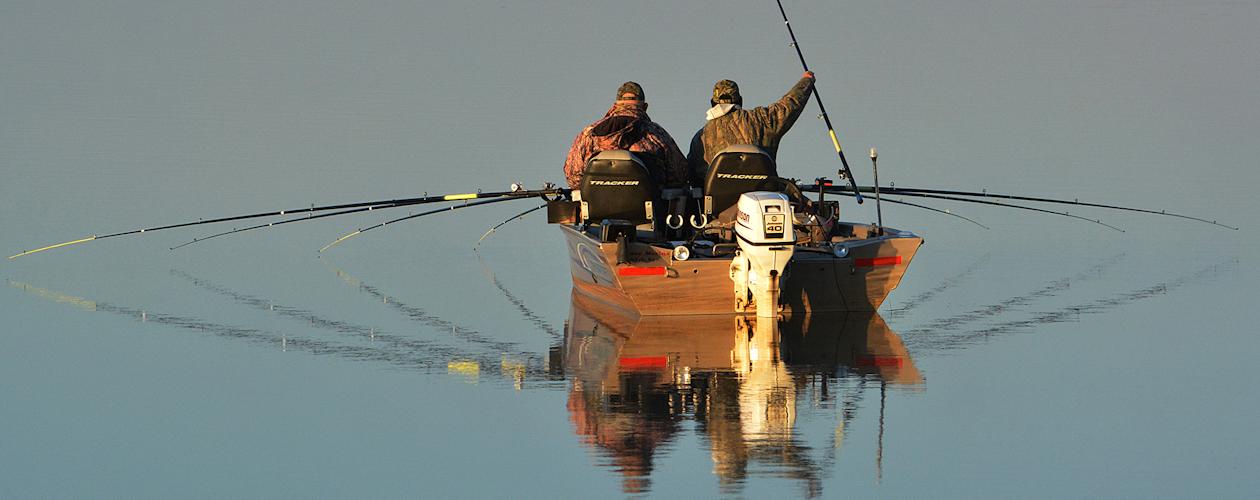Catfish Fishing 101
While they don't get much respect in the media or from fishing elites, catfish are one of the most pursued species we have. They can be caught 12 months of the year and they live in a variety of aquatic locations that make them accessible to many fishermen.
We have three main variations of catfish: the Channel catfish, the Blue catfish, and the Flathead catfish. Kentucky Fish and Wildlife also recognizes a sub-species of the Blue catfish called the White catfish.
Channel Catfish
Channel cats are the variety that most fishermen will encounter. They frequent rocky and riprap shorelines, sandy areas where bluegills and other species might spawn, and open water near creek and river channels.
They are often a greenish tint with many having random dark spots. Their backs will be dark green or black and they have a forked tail. They can be caught on just about any offering a fisherman will cast into the lakes. Worms, cut bait like shad or skipjacks, commercial stinkbaits, crappie jigs and minnows, and even crankbaits that bass or crappie fishermen put in front of them will draw strikes.
One of my favorite catfish baits is a concoction of strips of chicken breast meat cut into half-inch by two-inch strips, soaked for a couple of days in the refrigerator in cherry or raspberry Jello and Kool-Aid drink mix with just enough water to mix it all together.
You can add garlic salt or even Anise oil to add a bit more scent. Put these chicken strips in a Zip Lock bag and freeze them. They can be used several days and refrozen. If they get to stinking by your nose, the catfish will love them all the more.
In the spring, the channel cats will spawn around riprap banks and rocky areas. They are a social fish so if one is caught, there is a good chance they have buddies nearby.
The favorite method to catch channel catfish is to fish bait under a bobber just above the bottom and move it slightly but often. If a channel catfish is present, it won't waste any time eating your offering.
The meat of channel catfish will have some areas of yellowish fat along the back and red meat along the lateral line that should be removed before they are cooked to lessen the strong taste it might have.
Blue Catfish
Blue catfish are very common in our lakes but they tend to frequent deeper areas around channel breaks and deep holes in creeks and rivers. Blue cats are the most sought after of the catfish in the tailwaters of both Kentucky and Barkley dams.
They are very sensitive to current and a higher current flow will often trigger them to become more active and to bite. This is why rocky and trashy areas with current breaks along river channels are very popular spots to look for blues.
If you can find an area where two channels like a creek channel runs into the main river channel, fish the down current side of these drops with cut bait or commercially prepared stink baits.
We have blue catfish weighing upwards of 100 pounds in our lakes and rivers and they are the most sought after by the tournament catfish fishermen.
White Catfish
The white catfish are a much lighter colored version of the deeply forked tailed blue. The blue catfish will have a dark blue/gray back with lighter blue sides and white belly. The white catfish will be a battleship gray back with silver sides and white belly.
The meat of the white catfish is much more like that of a flathead catfish and is highly sought after. Many fishermen target the white catfish in winter months using double minnow rigs with large minnows fished right along channel breaks.
Flathead Catfish
The Flathead catfish is less likely to be on your stringer here on the lakes. It is a resident of woody cover and holes or depressions in rocky banks or points. The flathead is highly sought after by "noodlers" or hand grabbers who catch the fish in boxes, under cover along banks, or rock "caves". Noodlers will create these rock caves for the purpose of catching the big, spawning flatheads.
A flathead catfish is much more likely to feed on fish like bluegills, shad, or other living/swimming aquatic species. It is a dark brown to greenish color with a very splotchy pattern. The belly is a cream color. The tail of the flathead is forked very little.
It gets its name "flathead" from the wide, flat mouth and wedge-shaped head. The head may seem out of proportion to the rest of its body, but the wide mouth enables it to catch and consume fish that the other catfish species would not.
The meat of the flathead is very white and has little of the red meat along the lateral line of the other species. While the flathead is much different in shape and is harder for most anglers to clean, the meat that lies along its belly is almost always filleted off and prized by those who catch and clean it.
Most anglers who target flatheads will use live bait like shad or small bluegills and suspend the bait off the bottom slightly.
Editor's Note: Fishing 101: Crappie Fishing is written by professional fishing guide Doug Wynn.






